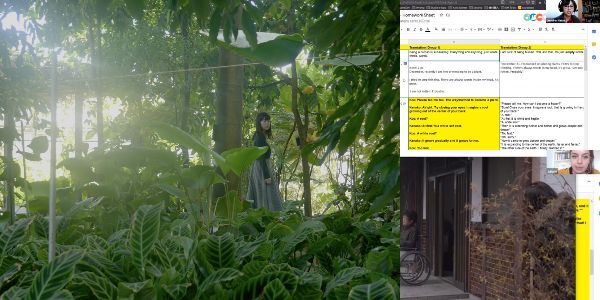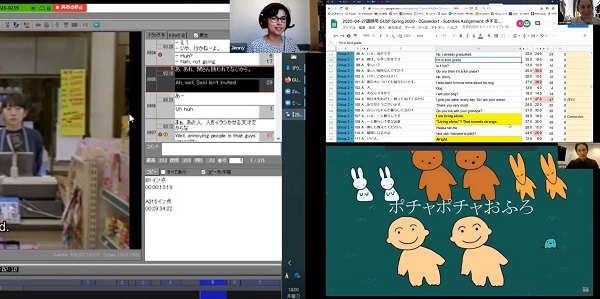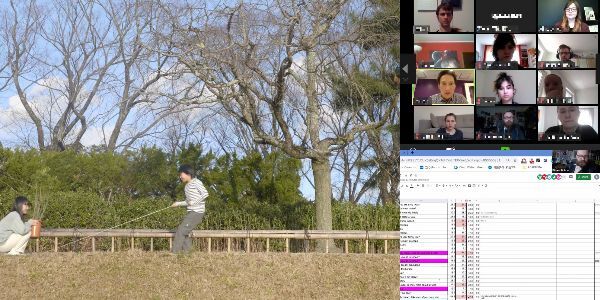第4講では、引き続きハインリッヒ・ハイネ大学の学生たちが作成した日英字幕翻訳の課題をグループごとに発表していきます。
まだ馴染みの薄い字幕のルールに関しては、各グループ、チェック担当を配置することに。文字数の制限や句読点の使い方に関して注意を払うよう意識を高めました。
今回、特に議論が白熱したのは、コンビニで働く主人公がお客から商品について尋ねられた時の「そこに無ければないと思います」というセリフの訳し方です。セリフ自体に失礼な印象はありませんが、本来なら店員は商品があるかないか知っていなければいけない立場。それを放棄しているかのような無礼なニュアンスがきちんと伝わるように訳出するため、さまざまなアイデアが飛び交いました。
また、このセリフは作品のテーマを表現する重要な役割を担っており、シーンを変えてたびたび出てきます。学生たちは、日本の文化に詳しくない観客にも理解してもらえるベストな字幕をひねり出そうと、かなり頭を悩ませた様子。正解のない字幕作りを通じて、日本語と日本の文化への理解がより深まったことを実感していました。
次週は今回の気づきを活かして、さらに字幕をブラッシュアップします!
Session 4 of the GUSP Program saw the budding media translators at Heinrich Heine University review each others’ subtitles to ensure that the director’s vision was reflected in the final product. It was in this session, however, that a seemingly simple exchange between two characters revealed an important aspect of Japanese culture.
At the beginning of the film, the protagonist Kanako, a part-time convenience store clerk, tells a customer that if a product is not on the shelf, it is most likely out of stock: “soko ni nakereba, nai” . Translated literally, the statement would seem quite polite in English. However, by the famously deferential standards of Japanese customer service, Kanako’s manner would be considered quite rude. Students realized this opening scene is therefore a key moment in showing the audience Kanako’s awkward yet rebellious personality.
Importantly, this same line is repeated in exactly the same phrasing, right before the film’s climax: “soko ni nakereba, nai.” Its meaning here, however, is very different: in its new context, it refers to the fact that Kanako can’t simply wait for her missing friend. What may have seemed like a throwaway line at the start of the film is actually what spurs her decision to stage a dramatic rescue.
The students were tasked with finding one line, with two meanings, both of which give the audience crucial information to understand the protagonist’s character arc and growth. How did they handle it…? You’ll have to find out for yourself!
In the next GUSP session, students will put the finishing touches on their assigned subtitles and prepare their work for the official release. We can’t wait!





